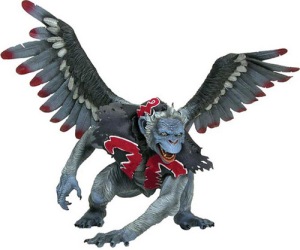 This post by a colleague of mine, Erik Meijaard of The Nature Conservancy, really nails down one of the principal bugbears of conservation science – how to make our research truly relevant to reducing or reversing the trends in species extinctions. It also goes straight to the Toothless page.
This post by a colleague of mine, Erik Meijaard of The Nature Conservancy, really nails down one of the principal bugbears of conservation science – how to make our research truly relevant to reducing or reversing the trends in species extinctions. It also goes straight to the Toothless page.
We as a discipline have been studying ways to improve the plight of biodiversity for over 50 years, but across the board, species are disappearing at faster and faster rates. So obviously we’re doing something dreadfully wrong. Yes, we have made huge scientific leaps in that time, quantified many hypothetical aspects of extinction and restoration (e.g., fragmentation, trophic cascades, protected areas, etc. – check out Conservation Classics for some of the more memorable conservation science advances), and identified some of the major socio-political impediments to achieving real conservation outcomes.
Yes, one can argue that without conservation science we’d already be a lot worse off and many species now just hanging on would have long since disappeared. It’s also arguable that our battle was lost before we begun fighting simply by virtue of the burgeoning human population and its never-ending quest to consume more – one step forward and two steps back.
I’m not at all trying to condemn the discipline, but I think it’s worth our while to hold our research up closely and regularly to the mirror and ask ourselves in the most objective manner whether we think we’re truly changing things for the better. Something to think about the next time you apply for that research grant.
Erik’s post is reproduced below.
Last year, The Nature Conservancy’s Indonesia program was offered an undisclosed amount of money from an anonymous motorbike company. Presumably because the company knew of the Conservancy’s expertise in primate research, they somewhat bizarrely requested us to investigate bike preference among Indonesian apes and monkeys.
As the senior scientist of the Indonesian forest program, I rejected the idea outright. The scientific scope of the study appeared far from our usual focus on proper applied conservation research. Do we really care which brand of motorbike different species of primate prefer? And if we knew, would it really help us to protect them any better? My answer to both questions was “no.”
Still, I couldn’t stop myself wondering. What if we simply took the money? It had been offered with virtually no strings attached. If we could do the study cheaply we might have some funds left for more relevant work.
So, weak as I am, I relented and took the cash and developed a minimalistic study in which we studied photos of primates on bikes. The results indicate that agile gibbons (Hylobates agilis) prefer Yamaha, crested black macaques (Macaca nigra) prefer Honda, and pig-tailed macaques (Macaca nemestrina) favor push bikes. Curiously, none of the species seem to favor the big handlebars on bikes called “ape hangers.”
Admittedly, the sample size of three is somewhat limited, but a tentative conclusion is that the higher evolved a primate is, the more expensive its bike selection. The donor company is extremely pleased with the results of this study, and they are now translating the findings into new marketing strategies for a very expensive bike for people, based on the assumption that humans are at the top rung of the evolutionary ladder.
Whether the story is factual or not, the moral of it is that most conservation research in places like Indonesia, but also elsewhere in the world, is largely irrelevant to conservation.
Douglas Sheil (a colleague of mine) and I published a paper some time ago in which we compiled, categorized and evaluated 284 publications on Bornean wildlife (Biodiversity and Conservation 16:3053–3065). We found that few studies address threats to species and fewer still provide input for or guidance to effective management.
Too often scientists working under the guise of conservation answer questions that are not important to conservation — and judging my CV, I am one of them. In the end, if we cannot come up with the facts and recommendations that can be directly applied by managers, decision makers, local communities and other people that really count in conservation, conservation science will have little to offer to conservation.












